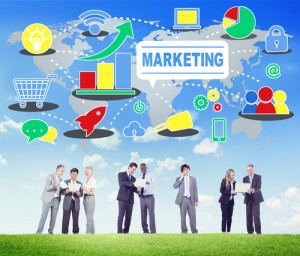Paul Roetzer of The Marketing AI Institute discusses what you need to know to get artificial intelligence working for you today.
Artificial intelligence promises a bold new future but seems to be flailing in the present. Right now, Microsoft’s AI-powered Bing and Google’s Bard are more famous for their mistakes than their milestones. But AI is a lot more than those two. Its successes are all around us, we just haven’t been aware of them.
Do you use Grammerly? That’s AI. When Gmail finishes sentences for you, that’s AI. It determines what content gets found and shown to users on Google, YouTube, TikTok, Facebook and more.
So, what can it do for marketers right now?
We asked Paul Roetzer, founder and CEO of the Marketing AI Institute, about that and about what revolutionary capabilities we can expect to see in the very near future.
Q: So how should I as a marketer be thinking about AI and how it can help me?
A: There are three main areas where you would apply it. Intelligent automation, or repetitive tasks, is the starting point for most people. If you’re in advertising or email, marketing or analytics or social media or whatever your role in marketing is, just make a list of all the things you do, where there is a defined process.
Let’s use podcasting as an example. For every podcast we do each week there’s 17 steps we go through from developing the brief to putting it together to recording it, transcribing it, turning the transcription into blog posts, developing social shares, publishing social. It’s the same things every time. And so that’s a repetitive process. And so you can simply say, “Okay, has anyone created AI tools to do any of these steps?”
So start with the things you just do all the time. If you’re in content, you’re developing content strategies, figuring out subject lines, creating headlines, whatever it is. For email, you’re figuring out who to send to, when to send, what subject line to use, what copy to use. So it’s all when you think about marketing, there’s all these underlying repetitive things we go through.
Q: OK, that’s one.
A: Next is enhancing creativity. And not just with language. There are four kinds of multimodal content — images, text, audio and video. Anywhere you’re creating content across those four areas ask, “Is AI opening up new ways we can do this?” Not just writing tools but image generation, video generation, audio generation and analysis. Where I think most marketers should be focusing on is intelligent automation and enhancing creativity.
Q: Some of the people I’ve spoken with say the ability to search and collect information from all four of those modalities is coming very soon.
A: I wouldn’t be shocked if it was in the next six to twelve months. You’ll be able to take a language model and feed it all your text, all your video, all your audio, all your images specific to your brand or organization and it learns from that set. Then you could actually adjust the weights to say, “Hey, when you’re creating outputs give stronger weight to our proprietary data.”
And I think you’re going to be able to train language models down to the individual writer. So say this is Jane’s personal writing assistant that’s trained on all of Jane’s webinars, podcasts and articles and it learns to write in Jane’s style and voice. That to me is the inevitable outcome of where we’re going now. How quick we get there probably has more to do with the compute power required to do that stuff and someone building those capabilities. But I don’t see any technical limitations to that occurring in the very near future, personalized writing assistance or generative, AI assistance.
Q: But…?
A: If you’re asking, ChatGPT or GPT3 or some writing tool to write you something based on data and numbers, there’s a decent chance it’s gonna get stuff wrong. It’s just not custom trained to do that. But I’ve seen people tuning training models specifically on analytics data [not on the entire internet], trained a model in that case to interpret charts and data and pull from those specific charts and data. So it’s not going to hallucinate and make up a bunch of numbers. So that’s doable now.
A model like that, I could have it looking at some marketing data, email data, social data, ad spend. I could safely have it write me a narrative of what was happening. So I don’t have to analyze the chart.
But if you kind of play this out to a situation where you just go to ChatGPT and say, “Write me a summary about this topic and here’s some source data.” You’d definitely need to have that highly edited.
I think that’s a good situation, though. I am not a believer that we should be trying to get the human out of the loop. I really don’t think that should be the goal. I think the more the AI does, great. There’s plenty of things that we all every day have on our to-do list that never get done. Lots and lots of things we could fill our time with. If the AI starts doing more and more of the repetitive data-driven stuff that I don’t really enjoy anyway, I get to now spend more time doing what I like. That should be the goal.
The post How AI can help your marketing right now appeared first on MarTech.
MarTech(16)
Report Post





